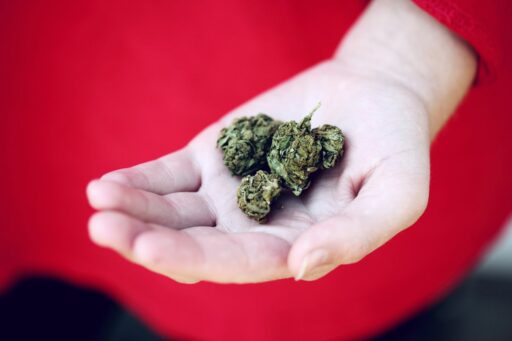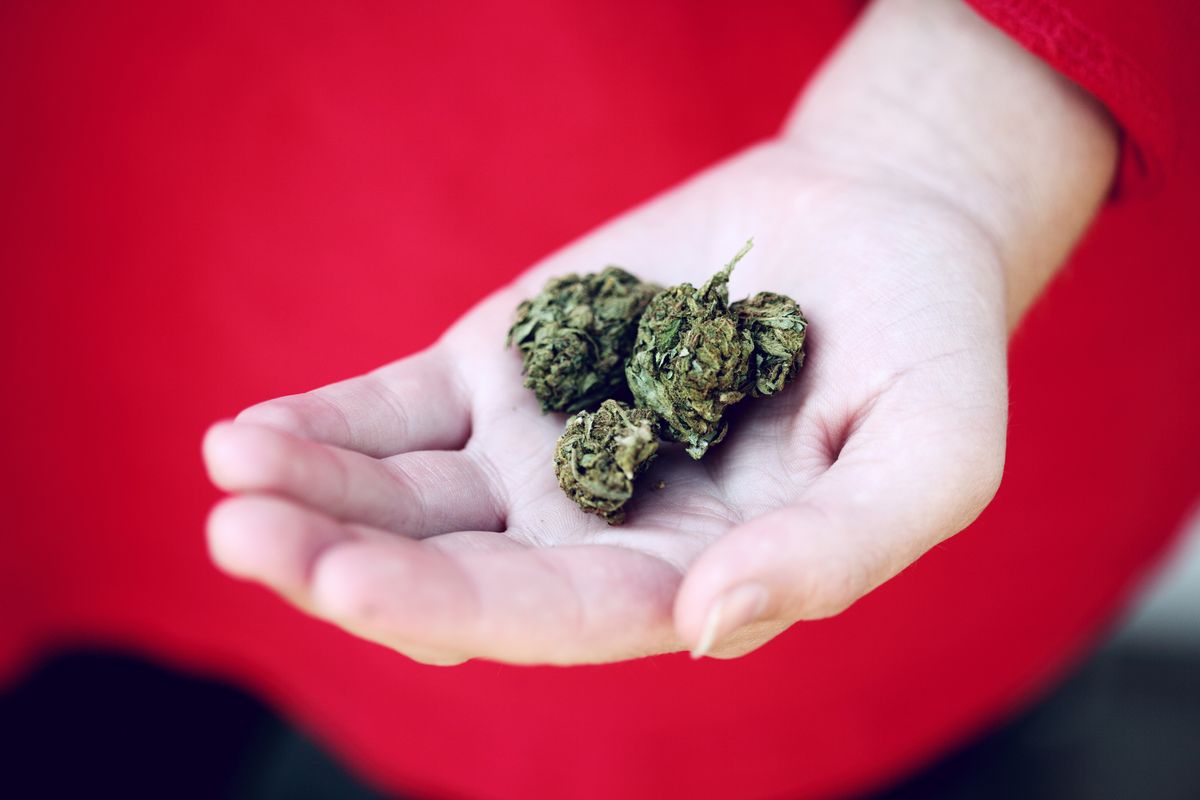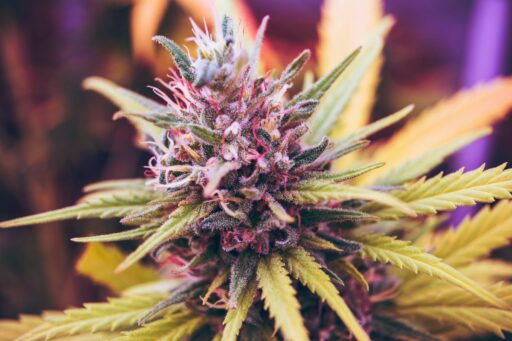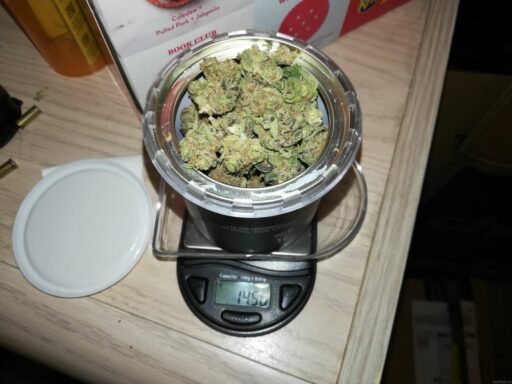With the growing prevalence of cannabis dispensaries across the globe, it’s essential for consumers to understand how to navigate these establishments effectively. ‘Cannabis Compass: Navigating Your Nearest Marijuana Dispensary’ is an article designed to guide both new and experienced users through the various aspects of dispensary usage, from understanding the different types of dispensaries and their menus to legal considerations and product selection. This comprehensive guide aims to ensure a safe, informed, and enjoyable experience for all dispensary visitors.
Key Takeaways
- Recognize the differences between medical and recreational dispensaries to find the one that best suits your needs.
- Familiarize yourself with dispensary menus and the role of budtenders to make informed choices about cannabis products.
- Understand the legal and regulatory landscape, including state-specific laws, ID requirements, and purchasing limits to ensure compliance.
- Gain product knowledge about the various forms of cannabis, potency, strains, and alternatives like edibles and tinctures for a tailored experience.
- Stay updated on consumer safety, quality assurance, and emerging trends in cannabis retail to make the most of your dispensary visits.
Understanding the Dispensary Landscape

Types of Dispensaries: Medical vs. Recreational
When embarking on a visit to your nearest marijuana dispensary, it’s essential to understand the two primary categories they fall into: medical cannabis and adult-use, commonly known as recreational weed. These are legal classifications that dictate the dispensary’s operations, customer base, and product offerings.
-
Medical dispensaries cater to patients with a physician’s recommendation or a medical marijuana card. They typically offer a range of products geared towards therapeutic benefits.
-
Recreational dispensaries are available to any adult over the legal age limit, providing cannabis products for personal enjoyment without the need for medical justification.
While both types of dispensaries may carry similar products, the intent behind their use and the regulations governing their operations differ significantly.
It’s important to note that not all states have legalized both forms of cannabis. Some regions may only permit medical dispensaries, while others have opened the market to include recreational shops as well. This distinction can affect product availability, pricing, and even the shopping experience itself.
Navigating Dispensary Menus
When you first step into a dispensary, the array of products can be overwhelming. Dispensary menus are designed to help you understand what’s available and make informed choices. They typically categorize cannabis products by type, such as flowers, concentrates, edibles, and topicals. Each category will often list the strain name, THC/CBD content, and price.
- Flowers: Often categorized by indica, sativa, and hybrid strains.
- Concentrates: Includes waxes, shatters, and oils, usually with higher potency.
- Edibles: Variety of food products infused with cannabis, with dosage information.
- Topicals: Creams and balms for external use, not psychoactive.
Remember, potency is not the only factor to consider. The terpene profile, which influences flavor and effects, is also important. Take your time to ask questions and understand the nuances of each product.
It’s also crucial to be aware of the different consumption methods and their onset times. Smoking or vaping can have immediate effects, while edibles may take longer to feel. Always start with a low dose, especially if you’re new to cannabis or trying a new product.
The Role of Budtenders
Budtenders are the frontline experts in dispensaries, guiding customers through the diverse range of cannabis products available. They play a crucial role in educating consumers about the different strains, potencies, and consumption methods. Budtenders must stay informed about the latest products and industry trends to provide accurate information.
- Understanding customer needs and preferences
- Recommending products based on desired effects
- Explaining the nuances of various cannabis forms
- Ensuring customers are aware of legal purchasing limits
Budtenders are not just salespeople; they are educators and advisors who enhance the dispensary experience. Their knowledge can make the difference between a satisfactory visit and an exceptional one.
With the cannabis industry evolving rapidly, budtenders are also expected to keep up with regulatory changes and product safety. They often direct customers to additional resources, such as the Marijuana News website, for further education on cannabis-related topics.
Legal and Regulatory Considerations

State-Specific Cannabis Laws
Navigating the complex tapestry of state-specific cannabis laws is crucial for both consumers and business operators. As of January 2024, Marijuana is legal for recreational use in 24 states plus the District of Columbia. However, the regulatory landscape varies significantly from one state to another, with each jurisdiction imposing its own rules regarding possession, distribution, and consumption.
It’s essential to understand that despite state laws, under U.S. federal law, marijuana remains a controlled substance.
For instance, some states have established cannabis markets that include both medical and recreational dispensaries, while others have only legalized medical marijuana. Additionally, local ordinances can further dictate the operation of dispensaries, influencing where they can be located and how they can advertise their services.
To stay compliant and informed, always check the latest regulations in your state and local area before engaging with cannabis products or services.
Age and Identification Requirements
When visiting a marijuana dispensary, it is crucial to understand the age and identification requirements that are in place to comply with state laws. All customers must present a valid, government-issued photo ID to verify their age before making any purchase. The minimum age for purchasing cannabis is typically 21 for recreational use and 18 for medical use, but this can vary by state.
It’s important to note that dispensaries are legally obligated to refuse service to anyone who cannot provide the appropriate identification.
Here is a quick reference for the age requirements in some states:
- California: 21 for recreational, 18 for medical
- Colorado: 21 for recreational, 18 for medical
- Oregon: 21 for recreational, 18 for medical
- Washington: 21 for recreational, no medical program
Remember, these regulations are in place to ensure the safety and legality of cannabis sales. Always bring your ID, and be aware that some states may have additional requirements, such as a medical marijuana card for patients.
Purchasing Limits and Compliance
When visiting a dispensary, it’s crucial to be aware of the purchasing limits imposed by local and state regulations. These limits are in place to prevent abuse and diversion of products to the black market. For instance, many states have set a maximum amount of cannabis that can be purchased or possessed at any given time.
Compliance with these regulations is not only a legal obligation but also a matter of dispensary etiquette. Failure to adhere to these rules can result in fines or legal action against both the consumer and the dispensary. It’s important to remember that these laws vary widely from state to state, and even between medical and recreational dispensaries.
While the specifics can be complex, a general understanding of the limits and compliance requirements will ensure a smooth dispensary experience.
For first-time buyers, it’s advisable to familiarize yourself with the legal landscape before making a purchase. This includes understanding the nuances of state-specific cannabis laws and the documentation required for purchase.
Product Knowledge and Selection

Different Forms of Cannabis
Cannabis comes in various forms, each offering a unique experience and method of consumption. Understanding the different forms is crucial for making informed choices at your local dispensary.
- Flower: The traditional bud form of cannabis, used for smoking or vaporizing.
- Concentrates: Potent products like oils, waxes, and shatters that are often vaporized.
- Edibles: Food items infused with cannabis, offering a longer-lasting effect.
- Tinctures: Liquid extracts typically administered under the tongue for quick absorption.
- Topicals: Creams and balms applied to the skin for localized relief.
When selecting a form of cannabis, consider the onset time, duration of effects, and the method of consumption that best suits your needs. Each form can provide a different experience, so it’s important to start with a low dose and go slow, especially if you’re trying a new form for the first time.
Understanding Potency and Strain Effects
When exploring the diverse world of cannabis, understanding the potency and effects of different strains is crucial. Potency is primarily determined by the concentration of cannabinoids, such as THC (tetrahydrocannabinol) and CBD (cannabidiol), which can vary widely among strains.
- Indica strains are often associated with a relaxing, sedative effect, making them suitable for evening use.
- Sativa strains tend to provide a more energizing experience, ideal for daytime activities.
- Hybrid strains offer a balance between the two, with effects that can lean towards either Indica or Sativa, depending on the dominant lineage.
It’s important to start with a low dose, especially if you’re new to cannabis or trying a new strain. The effects can be influenced by individual tolerance, consumption method, and even the environment in which it’s consumed.
Remember, the same strain can produce different effects in different individuals. It’s not just about the percentage of THC or CBD, but also the terpene profile and other cannabinoids present. Engaging with a knowledgeable budtender can help you make an informed choice that aligns with your desired experience.
Edibles, Tinctures, and Topicals: What to Know
When exploring the world of cannabis, it’s essential to understand the variety of products available beyond traditional smoking. Edibles, tinctures, and topicals offer unique experiences and benefits, each with their own method of consumption and onset time.
Edibles are cannabis-infused foods and drinks that provide a discrete and easy method of ingestion. However, they can take longer to take effect, sometimes up to several hours. This delayed onset is crucial to remember to avoid overconsumption.
Tinctures are liquid cannabis extracts taken sublingually (under the tongue) for a faster onset than edibles. They allow for precise dosing and are a good option for those seeking quick relief without inhalation.
Topicals are cannabis-infused creams, balms, and oils applied directly to the skin. They are typically used for localized relief of pain or inflammation and do not produce psychoactive effects.
While each product type has its advantages, it’s important to start with a low dose and go slow, especially with edibles, to gauge your body’s response.
Understanding the nuances of these products will enhance your dispensary visit and help you make informed choices that suit your needs and lifestyle.
Consumer Safety and Education

Quality Assurance and Lab Testing
Ensuring the quality and safety of cannabis products is paramount for both consumers and dispensaries. Quality assurance and lab testing are critical components in the cannabis industry, providing transparency and confidence in the products offered.
Modern Canna Science (MCS) is at the forefront of cannabis testing, offering comprehensive services to determine the potency and purity of cannabis products. By utilizing state-of-the-art equipment and methodologies, MCS ensures that consumers receive accurate information about the THC and CBD levels, as well as the presence of any harmful contaminants such as pesticides or heavy metals.
Consumers should have confidence in their product’s quality, safety, and effectiveness. This is achieved through rigorous testing protocols and adherence to strict regulatory standards.
The table below outlines the key components typically analyzed during cannabis lab testing:
| Component | Tested For |
|---|---|
| Cannabinoids | Potency (THC, CBD, etc.) |
| Terpenes | Flavor and Aroma Profiles |
| Contaminants | Pesticides, Heavy Metals |
| Microbial | Bacteria, Mold, Yeast |
| Residual Solvents | Chemicals from Extraction |
It’s essential for consumers to understand the importance of these tests and to seek out dispensaries that prioritize and display their lab testing results.
Safe Consumption Practices
When visiting a dispensary, it’s crucial to approach cannabis consumption with safety in mind. Start with low doses and go slow, especially if you’re new to cannabis or trying a new product. This helps you understand how your body reacts to different strains and forms of cannabis.
- Understand your limits: Recognize the signs of overconsumption, such as dizziness, anxiety, or nausea, and know when to stop.
- Choose the right environment: Consume in a comfortable, familiar setting, particularly if you’re experimenting with new products.
- Stay hydrated: Cannabis can cause dry mouth, so keep water handy.
- Avoid mixing substances: Combining cannabis with alcohol or other drugs can lead to unpredictable effects.
Responsible consumption also means being aware of how cannabis affects your ability to drive or operate machinery. Always plan for a safe way home if you’re consuming away from your residence.
Remember, each individual’s experience with cannabis can vary greatly. Taking the time to learn about proper dosing and listening to your body will contribute to a safer and more enjoyable experience.
Staying Informed: Resources and Events
In the ever-evolving world of cannabis, staying informed is crucial for both new and experienced consumers. Keeping abreast of the latest events and resources can enhance your understanding and ensure a safer experience.
One of the best ways to stay informed is by attending industry events. For example, the 5th Annual Teaching Cannabis Awareness & Prevention Virtual Conference is scheduled for April 17-18, 2024. Such events often provide valuable insights into cannabis education and the latest trends.
It’s also beneficial to subscribe to newsletters and follow reputable sources in the cannabis industry. This continuous stream of information can help you make informed decisions and stay ahead of regulatory changes.
Here’s a quick list of resources to consider:
- MJBizCon
- The Emerald Conference
- Cannabis Business Info newsletters
- Industry reports such as the Factbook and Cannabis 101
Remember, the more informed you are, the better equipped you’ll be to navigate the complexities of cannabis consumption and regulation.
The Future of Cannabis Retail

Emerging Trends in Dispensary Services
As the cannabis industry evolves, dispensaries are rapidly adopting new trends to enhance customer experience and streamline operations. Convenience and personalization are at the forefront of these innovations.
- Delivery Services: Many dispensaries now offer home delivery, making it easier for consumers to access cannabis products.
- Subscription Boxes: Similar to other industries, some dispensaries provide curated subscription boxes tailored to individual preferences.
- Virtual Consultations: With the rise of telehealth, virtual consultations with knowledgeable budtenders are becoming more common.
- Self-Service Kiosks: To reduce wait times, dispensaries are implementing self-service kiosks for quick order processing.
The integration of technology in dispensaries not only caters to the desire for convenience but also ensures a more personalized shopping experience. As these services become more widespread, they are setting new standards for customer service in the cannabis retail space.
Technology and Innovation in Cannabis Retail
The cannabis retail landscape is rapidly evolving with the integration of new technologies that aim to enhance the customer experience and streamline operations. Innovative solutions range from advanced point-of-sale systems to sophisticated online platforms that cater to both the medical and recreational markets.
- E-commerce and delivery platforms have become increasingly popular, allowing customers to browse dispensary menus and make purchases from the comfort of their homes.
- Seed-to-sale tracking software ensures compliance with state regulations by monitoring cannabis products throughout their lifecycle.
- Customer relationship management (CRM) tools help dispensaries personalize the shopping experience and build loyalty through targeted marketing and customer analytics.
As dispensaries adopt these technologies, they not only comply with regulatory demands but also set new standards for customer engagement and operational efficiency. The future of cannabis retail will likely see a continued emphasis on digital transformation, with a focus on data security and privacy in the wake of increasing online transactions.
The Impact of Legalization Movements on Dispensaries
The wave of cannabis legalization across various regions has had a profound impact on dispensaries, altering the retail landscape significantly. Legalization not only expands the market but also intensifies competition, leading to a dynamic environment where dispensaries must adapt to survive and thrive.
As new markets open up, dispensaries are often faced with a surge in demand, as seen in Illinois, where adult-use marijuana shops experienced product shortages due to high demand in the first week of legalization.
Dispensaries in areas of legalization see a shift in consumer demographics and preferences. A bulleted list of observed changes includes:
- An increase in first-time consumers seeking education and guidance.
- A diversification of product offerings to cater to a broader audience.
- The necessity for robust compliance systems to adhere to evolving regulations.
Furthermore, the legalization movement has a ripple effect on adjacent industries, with data suggesting that cannabis is capturing market share from the beer industry in Canada. This indicates a potential for dispensaries to explore cross-industry collaborations and marketing strategies.
Conclusion
As we conclude our journey through the ins and outs of navigating your nearest marijuana dispensary, it’s clear that the cannabis industry is evolving rapidly, with new data, events, and regulations emerging constantly. From the bustling sales in Ohio’s medical market to the product shortages in Illinois, each state presents a unique landscape for both consumers and business owners. The growth trends observed at MJBizCon and the shifting regulatory fees in Canada highlight the dynamic nature of the industry. Whether you’re a seasoned cannabis enthusiast or a newcomer, staying informed through resources like MJBizDaily can enhance your dispensary experience and ensure you’re up-to-date with the latest developments. Remember, as the cannabis compass continues to spin, your knowledge and understanding of the market will be your guiding star.
Frequently Asked Questions
What’s the difference between medical and recreational dispensaries?
Medical dispensaries sell cannabis to patients with a doctor’s recommendation or medical cannabis card, focusing on therapeutic benefits. Recreational dispensaries sell cannabis to adults for personal use, often with a broader product range and no medical documentation required.
How do I navigate a dispensary menu?
Dispensary menus categorize products by type (e.g., flower, edibles, concentrates), potency, strain, and price. Budtenders can help guide your selection based on desired effects and experience level.
What are the purchasing limits for cannabis?
Purchasing limits vary by state and can be based on weight or THC content. For example, some states limit purchases to one ounce of flower or its equivalent in other forms per transaction.
How do I know if a cannabis product is safe and high-quality?
Look for products that have been lab-tested for contaminants and potency. Reputable dispensaries will provide test results and ensure their products meet state regulatory standards.
What should I know before trying edibles for the first time?
Edibles can take longer to take effect, often 30 minutes to 2 hours, and the effects can last longer than inhaled cannabis. Start with a low dose, such as 5-10mg of THC, and wait to understand the effects before consuming more.
How is the cannabis retail landscape expected to change in the near future?
The cannabis retail landscape is likely to evolve with the introduction of new technology, delivery methods, and products. Legalization movements may also expand access and change regulatory frameworks.





